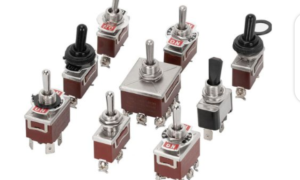From the invention of the printing press to the emergence of digital design, technology has consistently revolutionized how we create and produce. And now, groundbreaking innovation is making waves across various industries, pushing boundaries like never before 3D printing. This game-changing technology has taken imagination from the realm of science fiction and transformed it into a tangible reality. Today, we dive into the awe-inspiring world of 3D printing and explore its profound impact on sectors such as healthcare, manufacturing, fashion, and beyond. Fasten your seatbelts as we embark on an exhilarating journey through this revolutionary tool that promises to reshape our future.
Introduction to 3D Printing Technology
The technology of 3D printing has been around since the 1980s, but it was not until recently that it has become more widely available and affordable for consumers and businesses alike. 3D printing is a process of making three-dimensional solid objects from a digital file. The creation of a 3D-printed object is achieved using additive processes, where successive layers of material are laid down in different shapes to create the final product.
3D printing technology has had a significant impact on many industries, including healthcare, manufacturing, architecture, and even fashion. Healthcare providers have used 3D printing to create replacement parts for patients, such as artificial hips and knees. In manufacturing, 3D printers are being used to create prototypes and even final products. And in architecture, 3D printed homes and buildings are becoming more common. Even the fashion industry is starting to use 3D printing to create custom-fit clothing and accessories.
As the technology continues to develop and become more accessible, it’s likely that we will see even more industries being impacted by 3D printing technology.
History of 3D printing
The history of 3D printing technology can be traced back to the early 1980s, when a Japanese company called Noboto developed and patented a process called stereolithography or directed energy deposition. However, it was not until the late 1990s that 3D printing technology began to be used in a wide range of industries.
One of the first examples of 3D printing being used in an industrial setting was in the aerospace industry. In 1999, Boeing Corporation announced that it had successfully used 3D printed parts in the construction of its new commercial airliner, the 787 Dreamliner. Since then, other major aerospace companies such as Airbus and Lockheed Martin have also started using 3D printing technology for prototyping and production purposes.
The automotive industry is another sector where 3D printing technology is having a major impact. In recent years, several leading car manufacturers such as Audi, BMW, Mercedes-Benz, and Porsche have all started using 3D printers to produce prototype parts and components. In some cases, these companies are even using 3D printed parts in the final assembly of their vehicles.
The medical industry is also benefiting from the use of 3D printing technology. Doctors and surgeons are now able to create customized implants and prosthetics that are specifically designed for each patient’s individual anatomy. In addition,3D printers are being used to create models of organs and tissues, which can be used for training purposes or to plan complex surgeries.
Applications of 3D printing technology across different industries
It’s no secret that 3D printing technology is revolutionizing many industries, from manufacturing to healthcare. Here are just a few examples of how 3D printing is making an impact across different sectors:
Manufacturing: 3D printing is being used to create prototypes and end-use parts for a variety of industries, including automotive, aerospace, and consumer goods. In some cases, companies are even using 3D printed parts in their final products.
Healthcare: 3D printers are being used to create custom prosthetics and implants, as well as tissues and organs for transplantation. Additionally, 3D printing is being used to create models of patients’ Anatomy for pre-surgical planning.
Architecture: Architects are using 3D printing to create models of their designs, which can then be used to present to clients or for construction purposes. Additionally, 3D printed homes are becoming increasingly popular.
Advantages and Disadvantages of Using 3D Printing
3D printing technology has been around for quite some time now and its impact can be seen in many different industries. Some of the advantages of using 3D printing technology include the ability to create complex shapes and structures that would otherwise be difficult or impossible to create using traditional manufacturing methods. Additionally, 3D printing can be used to quickly and easily produce prototypes of products or parts, which can then be tested for function and form before mass production begins.
However, there are also some disadvantages to using 3D printing technology. One of the biggest challenges facing 3D printers is the issue of print quality. While advances have been made in recent years, many 3D printers still struggle to produce prints with fine details and smooth surfaces. Additionally, 3D printed objects can often be weaker than those created using traditional manufacturing methods. The cost of 3D printers and materials can be prohibitive for some businesses or individuals.
Types of Materials Used in 3D Printing
There are numerous types of materials that can be used in 3D printing, each with advantages and disadvantages. The type of material used will be dictated by the application or object being printed. Some common types of materials used in 3D printing include:
-ABS plastic: One of the most commonly used materials in 3D printing, ABS plastic is strong and durable. It can be used for a wide range of applications, including prototyping and manufacturing parts.
-PLA plastic: PLA plastic is biodegradable and derived from renewable resources. It is often used for objects that will not be subject to high stress or heat, such as prosthetic body parts.
-Metals: Metals can be printed using specialised 3D printers and are often used for manufacturing parts that require high strength or durability.
-Ceramics: Ceramics can also be printed using 3D technology and are often used for objects that need to withstand high temperatures or chemicals.
Future Potentials and Challenges of 3D Printing Technology
The potentials and challenges of 3D printing technology are far-reaching and will have a profound impact on various industries in the future. One of the most promising applications of 3D printing is in the area of healthcare, where it has the potential to revolutionize the way we create and deliver medical devices and implants. In addition, 3D printing can also be used to create customized products for consumers, which will greatly benefit those with specific needs or preferences.
However, there are also some challenges that need to be addressed in order to make 3D printing technology more widely accessible and affordable. For instance, current 3D printers are quite expensive, which limits their use to only large organizations or those with deep pockets. In addition, the technology is still fairly new and there is a lack of standardization among different manufacturers, which can make it difficult to find compatible printer models and materials.
Conclusion
It can be said without doubt that 3D printing technology has revolutionized many industries worldwide. Not only has it made it easier and cheaper to produce products, but it has also opened up a whole new range of applications such as custom-made items for medical and consumer use. As the technology continues to evolve, we should expect this trend to continue as more businesses take advantage of its benefits. This is great news for innovators everywhere who will have an even greater ability to create and bring their ideas into life with this revolutionary technology.































